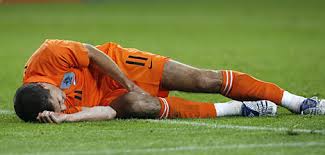
To determine the mechanism of the event, the understanding of biomechanics is necessary trauma injury biomechanics is the science of injury occurrence mepelajari a particular type of accident. A clear description of the accident, allowing us to find the type of injury that occurred.
1. Biomechanics of trauma in a car accident
Trauma in a car accident can be caused by:
a. Collision between the patients with a vehicle, or collision between the patients with other objects outside the vehicle if it was thrown out.
b. Conflicts between the organs in the body of the patient
1.1 Conflicts of driver / passenger
Car crash can occur by way of:
• From the front (frontal)
• From the side
• From the back
• Reversed
In a collision from the face with patients without a seat belt would have several phases:
a. Phase 1: The lower part of the patient slipped into the front. Usually the knee will hit the dashboard.
b. Phase 2: The top of the patient shifted to the front part. Injury can occur in the chest and abdominal areas due to collision with the steering wheel.
c. Phase 3: The body will rise and people will head against the window or the window. Heart - heart possibility of a broken neck.
d. Phase 4: The patient will back down. Heart - heart the possibility of a broken neck, especially on a chair with no senderan head. The possibility is worse is if the patient was thrown out.
In addition to the impact of possible injuries that occur almost equal to the collision which occurred from the face. On the impact of the back injury can occur whip (whiplash injury) on the neck, especially on the seat no headrests. In the car upside down can happen a variety of injuries. Injury that occurs more powerful if the patient does not use a seat belt.
1.2 Conflicts between the internal organs.
Sores internal organs may occur through mechanisms:
a. Compression Trauma
Compression trauma occurs when the front side of the body stopped moving forward while the inside of your body moving forward. Organ - the organ in the body wedged in the back by the back of the dam body in front of the wedged body structure. Examples of traumatic compression of brain tissue is bleeding, tearing of brain tissue, lung rupture, tear the heart.
b. Deceleration trauma
Deceleration trauma occurs when the internal organs continue moving forward and tear of the bonds that bound him to the back of the body. Example deceleration trauma is a blood clot in his head, a broken collarbone.
Protective device on the car:
a. Seatbelts.
Seat belts are proven to prevent passenger cars from injury or death. For example, if we drive a car with rather high speed (60km/jam) and experienced bentuan from the face, so if we do not use seat belts, we'll hit the windshield with a speed equivalent to fall from the floor of a 3-storey building.
60km/jam) dan mengalami benturan dari muka maka masih dapat terjadi patah tulang (selangka, iga)" onmouseover="this.style.backgroundColor='#ebeff9'" onmouseout="this.style.backgroundColor='#fff'">Although with our safety belts can prevent death, in a high speed (> 60km/jam) and experiencing the impact of the face can still occur fractures (clavicle, ribs)
Use of seat belts should be correctly, because incorrect use can cause injuries, especially at high speed. Seat belt is commonly used types of shoulder 3 points 1 point, the two lower abdomen 2 points. Use of appropriate seat belt is passed in the lower abdomen.
b. Senderan head
Usage senderan very good head to prevent injury due to whiplash and in the last phase of the impact of the face. Correct usage is in the back of the head.
c. Airbags.
Airbag is a tool in the form of an air bag is placed in the center of the wheel, and will expand if there is impact from the face. A well developed airbags can also cause injury like a broken forearm, eye injury due to glass eyes.
2. Biomechanics of trauma on pedestrian
Trauma to the pedestrian was hit by a car which is divided into 3 phases, namely:
• Phase 1: The impact with the bumper. At this phase will usually crash with legs and pelvis. Knee trauma often occurs in this first phase.
• Phase 2: Clash of the windshield and hood. Trauma to the chest and head can occur because people rose into the car.
• Phase 3: Conflicts with the ground. Head trauma and spinal cord can occur. Do not forget the trauma can also occur in parts of the body.
3. Biomechanics of trauma on motorists
There are 3 ways that often occurs in a motor accident.
a. Collision from the front. Motorists will be bumped to the front. The second leg will hit the steering handlebars that can cause a broken femur or lower leg bone. After that the driver will be thrown to the ground with multiple injuries.
b. Collision from the side. The first injury occurred is the foot, after which the driver will bounce and cause a variety of injuries.
c. Sliding down the bike / shifts. At the time of collision will occur, ddengan driver intentionally or unintentionally push the bike down, so the bike and rider will be shot in the back. Injury can be mild, but the soft tissues can occur more severe injuries.
Labels
Trauma biomechanics
Guess Book
Please consider my friends's sites
-
-
Hello World8 years ago
-
UPDATE APLIKASI SAS 16.0.79 years ago
-
-
Komunitas Aeromodelling Dumai (KAD)12 years ago
-
Robot Forex EURUSD Pasti Profit14 years ago
-
-
-
-
Bidadari yang Cantik Jelita16 years ago
-
BAJU UTK ORG KITE16 years ago
-
Award ke dua16 years ago
-
Music and Bear and cute and you16 years ago
-
-
-
-
-
-
-
-
-
-









No response to “Trauma biomechanics”
Post a Comment
please join in improving human health